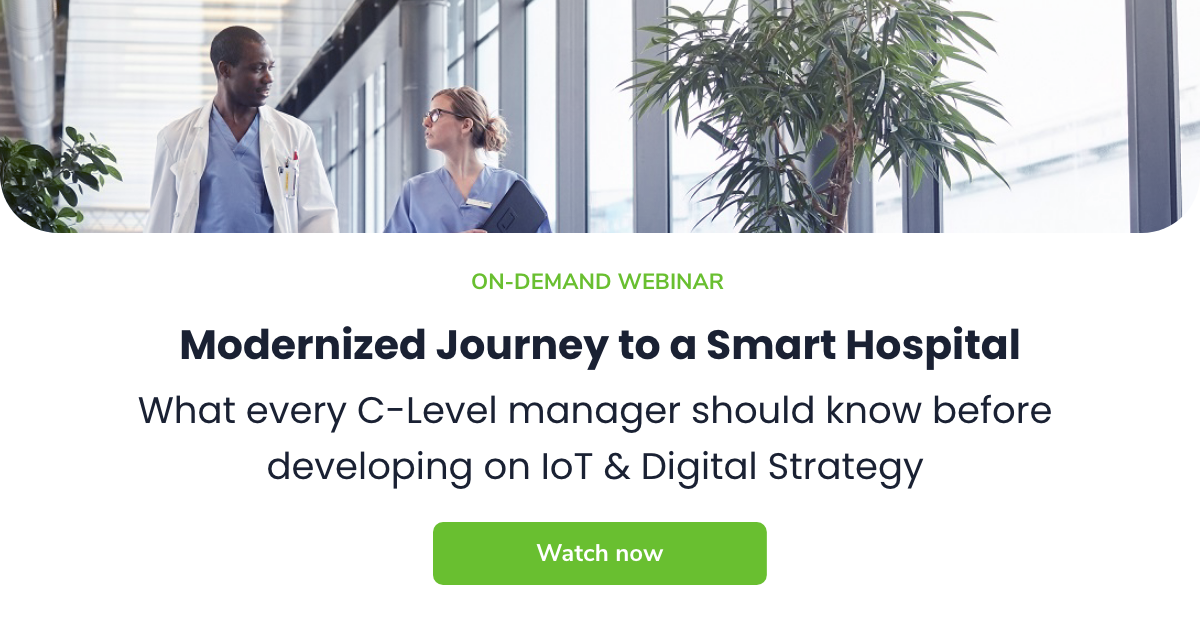Kapil Asher, senior director of enterprise healthcare Internet-of-Things solutions at Kontakt.io, recently joined a Becker’s Hospital Review webinar to discuss the growing role of technology in healthcare and more. In particular, the conversation was focused on how this technology can be applied to improve a key but sometimes overlooked area of hospital performance — staff and patient safety. Kapil walked everything through the process of how real-time location systems, sensors, and cloud applications combine to enhance safety, build a better work environment for staff and even improve patient outcomes. Here are the main takeaways from the webinar:

Table of contents:
Modernized journey to smart hospital – webinar summary
- The problem of dangerous work environments in healthcare facilities is real. Violence against healthcare workers, which has risen during the COVID-19 pandemic, and insufficient monitoring of patients with conditions like amnesia, Alzheimer’s and dementia, which can result in patient elopement, is a critical issue that demands attention. This is not just for the protection of staff and preventing assaults against them, but for patient elopement, which is associated with sentinel events, almost half of which result in a patient death. “It’s not that hospitals aren’t paying attention to these problems, it’s that the solutions are really expensive for them to prioritize at the moment,” said Kapil. He added that overcrowding in waiting rooms and poor visitor management that fails to prevent people from wandering into restricted areas are other important safety issues that healthcare organizations are confronting.
- Existing solutions often complicate safety challenges rather than solve them. Stakeholders expect deployments to operable on day one and provide complete solutions to problems, while coming from a single vendor at low cost from installation to ongoing maintenance. Instead, hospitals often get more complex solutions that use different protocols and networks while only dealing with a single-use case. They can be hard to maintain, lead to anti-competitive measures by vendors and result in slow time-to-value.
- Simple, effective solutions are available. A new generation of Wi-Fi and Bluetooth low-energy gateways and room sensors can now create connected infrastructures that can address staff safety issues in hospitals. Nurses and other staff can be connected to this wireless infrastructure through staff badges to make it easy to trigger safety alerts (instead of relying on legacy panic buttons) and to indicate with room-level accuracy the location and identity of a staff member in distress. Disposable patient wristbands and devices attached to hospital room ceiling grids to monitor occupancy and the room environment can fulfil the same role. Solutions from Kontakt.io use components that connect to a cloud-based application that can be accessed from any browser.4. What else can be said about modernized journey to a smart hospital?
- Historical data can be leveraged to create new solutions. In addition to the immediate benefits of these solutions in terms of staff and patient safety, the data they collect can be monitored for areas of potential improvements in workflows or resource allocation. For example, analyzing the number of alerts triggered over a period and their average response time can show which days or shifts tend to accumulate more alerts and can lead operational leaders to assign resources more effectively to address those situations. “If you want to truly change the behavior of a health system, if you want to truly reduce the number of staff duress and patient elopement events, it’s about watching the trend and using methodologies that can help you change your workflow,” Mr. Asher said.

